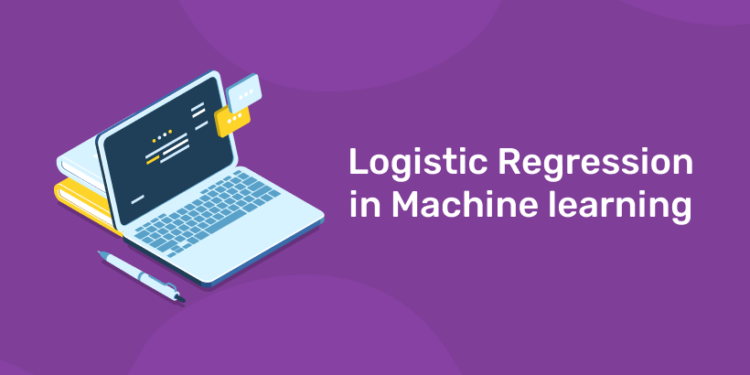Table of Contents
Logistics regression is one of the top best and simplest machine learning modeling algorithms. With this article, we are explaining in depth about logistic regression, when to use the Logistic regression model and some of the important aspects to understand while using logistic regression.
What is Logistic Regression in Machine Learning?
Generally, the method of logistic regression is used to model an event’s probability. One illustration of supervised learning is logistic regression. It is used to determine or forecast the likelihood that a binary (yes/no) event will occur. One use of machine learning to identify whether a person is likely to have the COVID-19 virus or not is an example of logistic regression. Binary classification refers to the fact that there are only two answers to this question: either they are infected or they are not.
Looking for a Data Science Career? Explore Here!!
In this hypothetical example, the likelihood that a person may contract COVID-19 could depend on the viral load, the symptoms, the existence of antibodies, etc. Our factors (Independent Variables) would include the viral load, symptoms, and antibodies, and these would have an impact on our result (Dependent Variable).
Linear Regression Vs Logistic Regression
1: Which of the following algorithms is most suitable for classification tasks?
The output of a linear regression is continuous and open-ended. The projected outcome in the case of logistic regression, however, is discrete and limited to a small set of values. A machine learning algorithm called linear regression is based on the supervised regression technique. Regression uses independent variables to model a goal prediction value. It is mostly used to determine how variables and forecasting relate to one another. Regression models vary according to the quantity of independent variables they use as well as the type of relationship they take into account between the dependent and independent variables.
Essentially, supervised categorization is what logistic regression does. For a given collection of features in a classification issue, the target variable (or output), y, can only take discrete values (or inputs). Hence, logistic regression is an example of a classification model, whereas linear regression is an example of a regression model.
Related Article: Linear Regression Concepts
🚀 Start Coding Today! Enroll Now with Easy EMI Options. 💳✨
Equip yourself with in-demand skills to land top-tier roles in the data-driven world.
Start Learning Now with EMI OptionsTypes of Logistic Regression
Basically, the Logistic Regression is classified into Three different types. They are:
- Binary Logistic Regression
- Multinomial Logistic Regression and
- Ordinal Logistic Regression.
When there are only two possible outcomes, as in our initial example of whether a person is likely to have COVID-19 or not, we use binary logistic regression. When there are numerous possible outcomes, such as if we expand on our previous example to determine whether a person might have the flu, an allergy, a cold, or COVID-19, we use multinomial logistic regression. And the third one, Ordinal logistic regression is used when the result is ordered, like in the instance where we extend our initial example to include grading COVID-19 infections into mild, moderate, and severe categories.
Ready to take your data science skills to the next level? Sign up for a free demo today!
Calculation Behind Logistic Regression
The probability is constantly between 0 (does not occur) and 1. (happens). Considering our Covid-19 example, the chance of testing positively and not testing positively will total to 1 in the event of binary categorization. In logistic regression, probability is calculated using the logistic function or the sigmoid function. A straightforward S-shaped curve called the logistic function is used to translate data into a value between 0 and 1.
Mathematically we can write,
P(Y) = 1/ 1+e-(b0-BX) where, P (Y) is the output of Logistic function and the value lies between or equal to 0 and 1, B0 is the slope, B is the Y intercept, and X is the independent variable.
Wrap Up
The fundamental benefit of logistic regression is that compared to other machine learning and AI applications, it is significantly simpler to set up and train. When the various outcomes or distinctions represented by the data are linearly separable, it is one of the most effective algorithms. This implies that a straight line can be drawn to divide the outcomes of a logistic regression calculation.
The ability to expose the correlations between many variables and their effects on results is one of logistic regression’s greatest draws for statisticians. This could rapidly ascertain whether two factors are favourably or negatively correlated, like in the case of the discovery that more studying is typically associated with better test results.
Free Tutorials To Learn
| SQL Tutorial for Beginners PDF – Learn SQL Basics | |
| HTML Exercises to Practice | HTML Tutorial | |
| DSA Practice Series | DSA Tutorials | |
| Java Programming Notes PDF 2023 |
Experience the power of our machine learning course with a free demo – Enroll Now!
| Related Articles | |
| Linear Regression Concepts | Machine Learning Basics |
| EDA Steps, Importance | EDA Techniques |
| Data Analysis | Importance of Data Preprocessing in ML |












